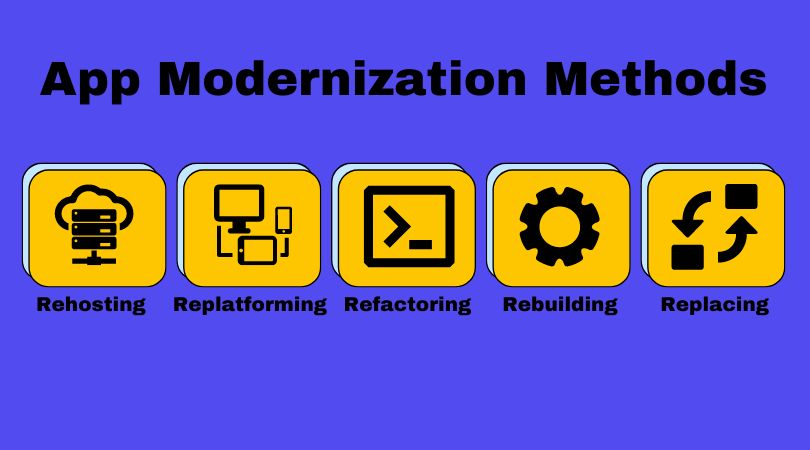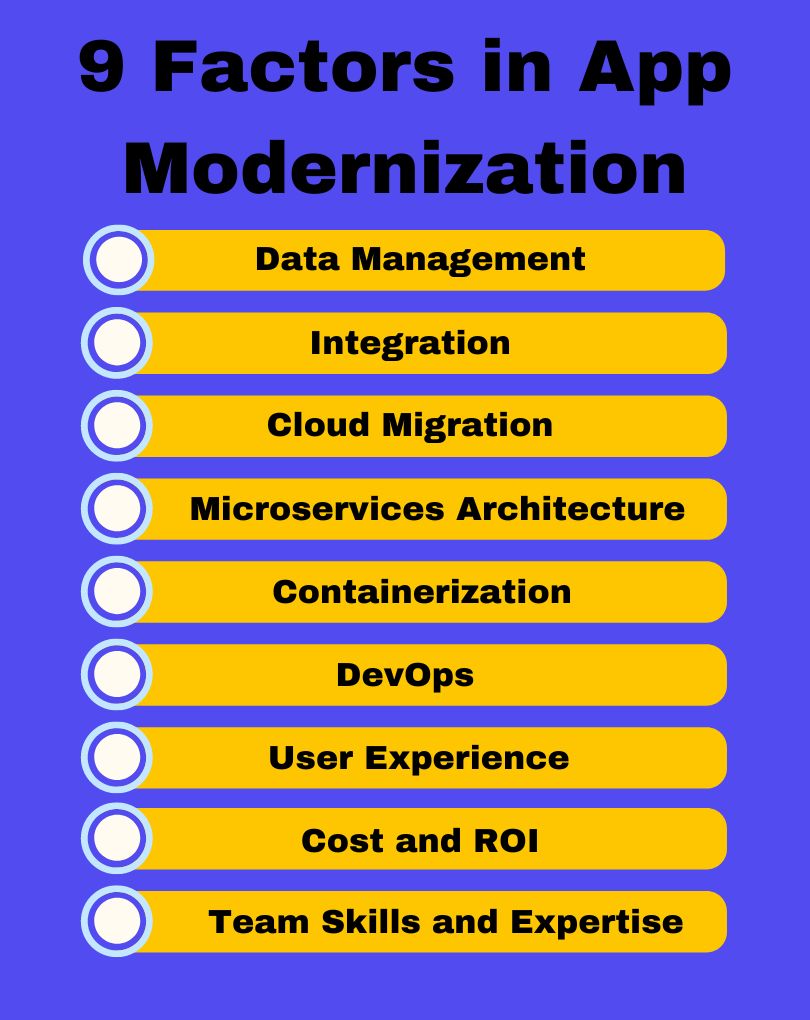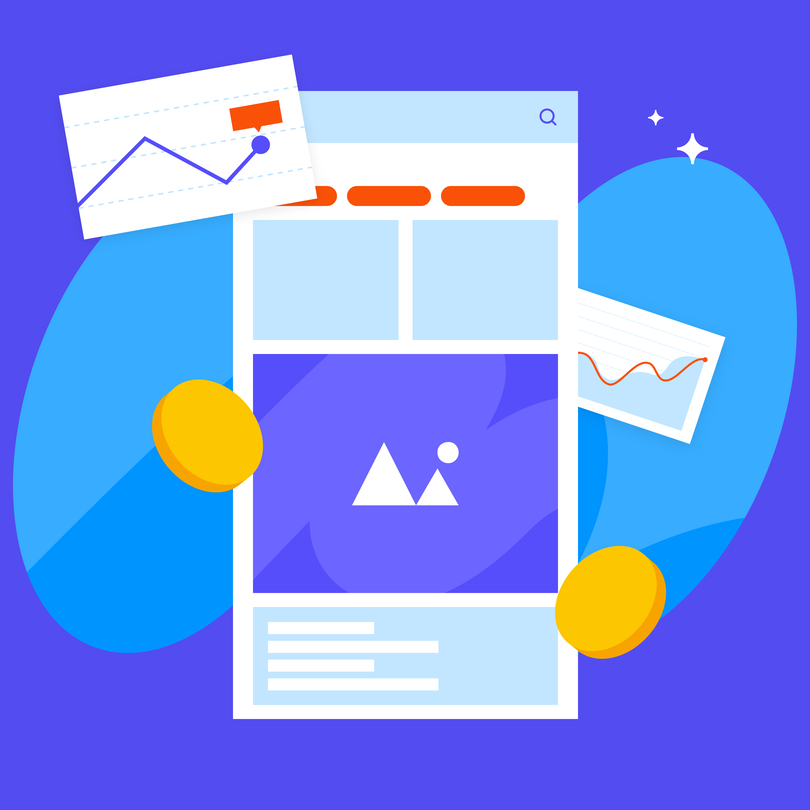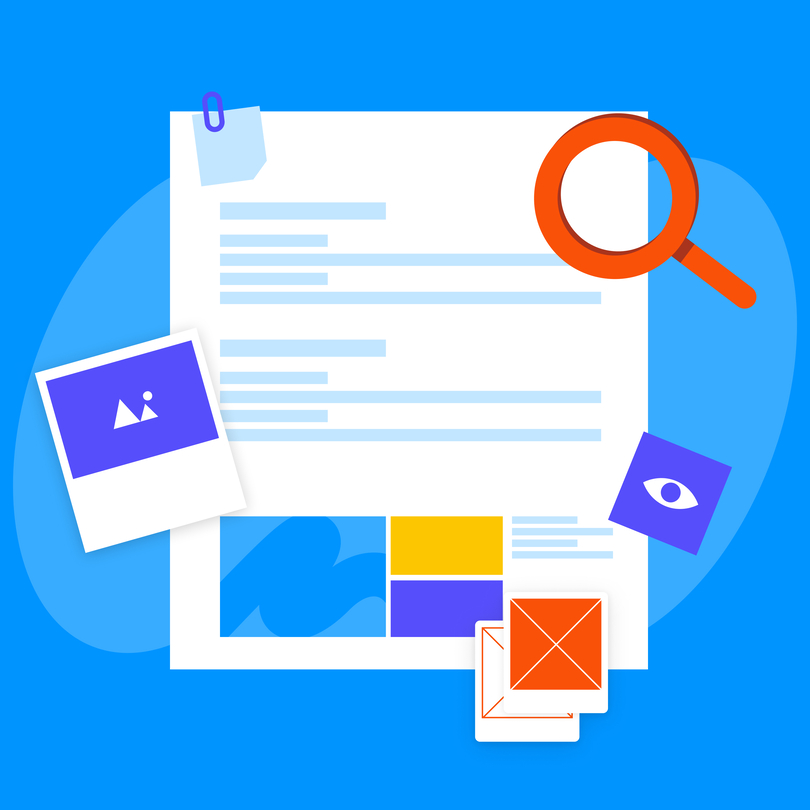Out with the old, in with the new! Is your app becoming clunky and outdated, with its UI/UX no longer meeting today's sophisticated requirements? Then, it may be time for app modernization. A proactive approach will help you prevent your legacy systems from becoming bottlenecks.
A full-scale transition typically addresses monolithic software, underlying code issues, and platform vulnerabilities. This is a vital strategic move in an era of quickly evolving technology and user needs.
Doing so won’t only help your business avoid security and performance concerns but also reduce competitive pressure and benefit growth. However, while highly beneficial, modernizing your application isn’t a joyride. You should have a roadmap with precise steps and goals to guide you toward success.
How do you accomplish that? By creating an app modernization strategy.
Before moving to the more complex part, let’s cover the basics.
What is App Modernization?
App modernization remodels legacy software into systems that leverage modern technologies, allowing for greater performance and scalability. This strategic process typically involves rearchitecting applications using cloud-native frameworks, microservices, and advanced security protocols.
Thanks to this transformation, businesses can frictionlessly introduce new features, lower operational costs, and create better user experiences. Modernization makes sure that apps meet the latest and future business requirements, a vital condition for agility and innovation. Moreover, it keeps legacy systems relevant and capable of competing with upcoming tech advancements.
Why Your Business Should Have an App Modernization Strategy?
A deliberate strategy should precede every ambitious undertaking, including app modernization. Otherwise, you may encounter various issues, from operational disruptions to user dissatisfaction.
Here’s why you should establish an effective plan.
1. Improved Operational Efficiency and Scalability
Apps must handle increasing volumes of data and digital transactions without compromising performance, speed, security, or user satisfaction. They should have enough scalability to grow and adapt in response to changes in business needs.
Many apps undergo modernization to process more transactions, handle larger user bases, and leverage a cloud-based payments infrastructure. This gives businesses the confidence that their applications won’t fall behind competitors who can deliver faster, more reliable services. Plus, it allows them to respond quickly to unexpected changes and potential opportunities, which is the future-proof ingredient for stable operations.
2. Compliance and Reduced Maintenance Costs
Increased financial pressure, compliance standards, and competition may become even fiercer in the future. Yet, legacy systems often demand specialized skills and constant patching, leading to high operational expenses.
Moreover, over half of businesses report that delaying application modernization has resulted in failures to meet compliance requirements and to scale critical services when necessary. For instance, modernization typically includes migrating to cloud-based infrastructure, which offers automated updates, improved security features, and easier compliance management. As a result, a business may move its platform from an on-premises legacy CRM system to a cloud-based solution to reduce the need for in-house maintenance, improve compliance, and decrease downtime.
3. Better Security
Cyber threats aren’t only becoming more frequent but also more sophisticated than ever. Legacy systems often have outdated security measures, making them prime cyberattack targets.
This is nudging many businesses to modernize their app security with advanced protocols like multi-factor authentication, encryption, and regular patches.
4. Better Decision-Making Through Improved Data Management
According to Statista, data volume and complexity will increase rapidly and reach 181 zettabytes in 2025. Businesses must advance their data management through predictive analytics, real-time processing, and AI-driven insights.
However, this requires modern apps that can integrate with big data platforms and enable comprehensive data aggregation and analysis.
5. Support for Agile Development Practices
Decomposing monolithic applications into microservices allows businesses to enable continuous integration and delivery (CI/CD). They can reduce the risk of major disruptions by using this approach and allowing frequent, accumulative updates.
6. Better User Experience
Nothing determines the future of an app as much as whether its users find it helpful and functional. They expect intuitive interfaces, fast response times, flawless navigation, and personalization.
Shifting to a cloud-native architecture is among the most common moves for businesses aiming for app modernization. This improves overall performance and customization options. Others ensure their applications have a responsive design that provides a consistent experience across devices.
Fundamental Components of a Successful App Modernization Strategy
The goal of the modernization strategy is to create a fast, well-performing app that meets your users’ needs and doesn’t exceed the budget. To achieve this, you should know which elements to check off the list.
The App’s Current Technology
If you were renovating a house, would you knock down the walls without understanding its structure? You probably wouldn’t. This is why you should gauge your current technology setup before deciding what and how to modernize.
Start by mapping out your existing applications and tools and understanding their interactions and possible dependencies on each other. Keep in mind that this assessment should go beyond listing technologies; it’s about evaluating their roles and future relevance.
Some applications might be performing tasks that no longer align with your business goals. For instance, you might discover that your mobile app’s old backend system is slowing down performance and UX. Instead of just upgrading it, you might find that migrating to a cloud-based backend would be more efficient.
App Modernization Methods
You can choose different approaches to modernize your app, each involving a different price and complexity level.

- Rehosting (Lift and Shift): With this method, you can move your app to a new infrastructure, typically the cloud, without altering the code. Although rehosting is swift and lowers disruptions, it doesn’t fully leverage cloud-native benefits, like auto-scaling, serverless computing, and microservices architecture, which require code and architectural changes. Consider this approach if the current tech requires no drastic changes or if you have time or budget constraints.
- Replatforming (Lift, Tinker, and Shift): You can take advantage of the new platform’s features with slight optimizations and tweaks to the app during the migration process. For example, you can move your app to a managed database service or reconfigure it to run on a cloud-optimized virtual machine. This method may be fitting for less critical applications that don’t need extensive integration with modern technologies.
- Refactoring (Re-architecting): Drastic code changes are necessary for this strategy, as refactoring rewrites parts or all of the application to improve functionality, performance, and scalability. As a result, it can be time-consuming and resource-intensive. In a certain way, this is a ‘meet-me-halfway’ approach that allows you to tap into app modernization advantages without engaging in radical software development.
- Rebuilding: As the name implies, this method includes completely redesigning and rewriting the app from scratch using modern technologies. It allows cutting-edge features such as serverless architectures, advanced data analytics, AI/ML integrations, and native support for mobile and IoT devices. Because of this, you should consider it if you’re held back by outmoded technology or usability and security issues.
- Replacing: You can also discard the old app and replace it with a new off-the-shelf solution or SaaS. In case your timeline is tight, a ready-to-use solution can be effective, but it may come with difficulties related to performance, integration, and user adoption.
A Roadmap
It’s not guaranteed that your assessment will reveal only one technology needing addressing. You may need to include multiple technologies in your app modernization.
The best approach is to create a strategy with essential milestones and clear timelines. This means you should avoid trying to cover everything in one go. Remember, there may be dependencies and resource limits that could slow down the process.
If you find it tricky to decide where to begin, start with the application modernization efforts that have the greatest business impact. Consider updates that can either provide a positive impetus or have detrimental effects. Moreover, your roadmap should prioritize steps that keep your operations in full swing.
Key Technical Factors in App Modernization
Staying ahead of the latest digital solutions requires being familiar with today’s software methodology.
Here are the technical considerations you should know before starting with your app modernization strategy.

1. Data Management
When modernizing an app, you must consider data migration, integrity, and compliance with regulations. Outline practices for proper data management to ensure data access, reliability, and security.
2. Integration with Other Systems
Your modernized app will often need to interact with various other systems, both internal and external. Many businesses use API-driven integration to facilitate communication between old and new systems.
3. Cloud Migration
Cloud-based solutions have become synonymous with enterprise technology due to various advantages compared to on-premise tech. For instance, moving to the cloud offers scalability, flexibility, and cost-efficiency.
However, you must confirm that your apps are ready for cloud migration by scrutinizing data sovereignty, assessing network latency, and selecting the right cloud service model (IaaS, PaaS, SaaS).
4. Microservices Architecture
This standard enables you to break down apps into smaller, independent services, resulting in agility, scalability, and fault isolation. Moreover, you will benefit from faster development cycles, easier deployment, and better use of resources.
5. Containerization
As a modern software development process, containerization uses tools like Docker to enable consistent deployment across different environments. Thanks to this, it provides greater scalability and portability while encapsulating applications and their dependencies into lightweight containers.
6. DevOps Practices
With the DevOps approach, you can promote the much-needed collaboration between development and operations teams. This allows key stakeholders to participate during the entire process and turns smaller software updates into a routine procedure.
7. User Experience
When assessing your app, check interface design, responsiveness, and accessibility to create a strategy that leads to higher user satisfaction and adoption rates.
8. Cost and ROI
Determine a realistic budget before starting and gauge the costs and potential ROI. This will help you justify the expenditure and match the modernization efforts with your business’s financial goals.
9. Team Skills and Expertise
Your app modernization strategy is only as good as your team’s skills and expertise. Determine whether your teammates have the necessary capabilities to execute the project effectively.
Understand how to address potential skill gaps or streamline the process by collaborating with professionals offering tailored web application development services.
App Modernization is a Demanding Undertaking with Invaluable Benefits
Not every business needs app modernization, but every business should assess its current application and whether it matches today’s enterprise standards. Foundry found that app modernization is the third-highest initiative for CIOs. Moreover, 91 percent expect their budgets to increase for modernization to boost business agility.
This serves as a reminder that if you haven’t considered refreshing your apps, it’s time to analyze whether you should. Doing so may require a thoughtful strategy, but it will help you tap into numerous benefits, including higher efficiency and competitiveness.





